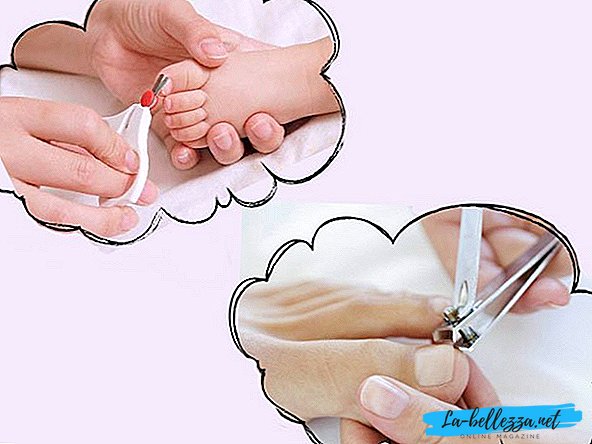
Vegetovascular dystonia (VVD) is a diagnosis that is often made at a young age and includes a variety of symptoms affecting various organs and systems.
This is a symptom complex caused by functional disorders of the autonomic nervous system.
Vegetovascular dystonia itself is not an independent disease.
According to statistics, vegetative-vascular dystonia often affects young women, mainly of asthenic physique, under the age of 30 years. In women older than 30 years and in old age, this diagnosis, basically, is no longer made.
Autonomic nervous system - This is part of the nervous system that regulates the functions of organs not controlled by humans. It is divided into two equivalent, opposite parts of the effect on the body: sympathetic and parasympathetic.
Their work is interconnected, therefore, if there is a violation in any of them, vegetovascular dystonia develops.
In the literature, the terms "neurocirculatory dystonia" and "vegetoneurosis" are often used synonymously.
Vegetative-vascular dystonia in women - causes
Vegetovascular dystonia remains a medical mystery to this day.
Its manifestations are so diverse that there is no clear definition of the boundaries between any disease and vegetovascular dystonia: everything that does not quite fit into the clinical picture of a particular disease is treated as vegetovascular dystonia.
Most often, women suffer, because their body is more susceptible to various stress factors.
The causes of the development of vegetovascular dystonia in women are:
- hormonal disruptions in the body that occur during pregnancy, lactation, in the menopause;
- toxicosis, other complications of pregnancy, various injuries in childbirth;
- some diseases of the thyroid gland leading to hormonal disruptions;
- hereditary predisposition;
- reduced immunity;
- some diseases of the spine (osteochondrosis);
- emotional imbalance;
- violated work and rest.
Provoking factors can be severe or chronic stress, conflict, any psycho-emotional overload, irritability and increased anxiety resulting from the tense situation in the family, at work. All of these reasons together lead to an imbalance in the activity of the autonomic nervous system and the development of vegetovascular dystonia in women.
There are studies that prove that the cause of the development of vegetative vascular dystonia is a congenital defect in the autonomic nervous system: the pathology of suprasegmental cortical formations, inherited by maternal line. The result of such a defect is an abnormal change in vascular tone.
Vegetative-vascular dystonia in women - symptoms
Since vegetovascular dystonia is a symptom complex associated with a change in vascular tone of various organs and systems, mainly cardiovascular and nervous, its manifestations are very diverse and have more than 150 symptoms.
Involvement of the cardiovascular system is manifested by the following symptoms:
- increase or decrease in blood pressure, this symptom is decisive in determining the type of vegetovascular dystonia;
- cardialgia - pain in the atrial region of a different nature (acute, aching, pressing, can be compressive), which sometimes needs to be differentiated with angina pectoris; occurs reflexively in response to psychoemotional stimuli, sometimes after physical exertion, is a determining symptom in establishing the type of vegetovascular dystonia;
- heart rhythm disturbances:
- an increase in heart rate (tachycardia) in response to external stimuli or a little physical activity (this is considered normal in athletes), which causes a lot of unpleasant subjective sensations;
- reduction of heart rate less than 60 beats per minute (bradycardia) under the influence of certain factors (again, bradycardia observed in athletes is a variant of the norm); It is accompanied by vivid symptoms: pallor of the skin, cold sweat, fainting conditions, sometimes short-term loss of consciousness;
- Arrhythmias - a violation of the heart rhythm in the form of extrasystole, also manifested by a feeling of discomfort in the heart, weakness and other symptoms of vegetative-vascular dystonia.
Vegeto-vascular dystonia, in addition to the listed cardiovascular symptoms, is manifested by a variety of neurological symptoms:
- dizziness, painful headaches;
- tinnitus, darkening in the eyes;
- subfebrile condition or a decrease in temperature;
- insomnia:
- sensation of heat, tremor of the fingers, cooling hands and feet, red spots on the skin;
- internal trembling, chills;
- feeling of lack of air;
- fears, panic attacks, emotional instability, tearfulness, anxiety;
- various manifestations of asthenic syndrome: meteorological dependence, weakness, increased fatigue.
Vegetovascular dystonia is divided into 4 types:
1. Vegetative-vascular dystonia of a hypertonic type: in connection with the predominance of activity of the sympathetic nervous system, it manifests itself with blood pressure above 140/80 mm Hg, headaches, sweating, a feeling of heat, a feeling of lack of air, red spots on the face and body; due to changes in the hypothalamus and cerebral cortex.
2. Vegetative-vascular dystonia of a hypotonic type: symptoms are associated with vascular insufficiency, which is manifested by low blood pressure (100 and below mmHg), respectively dizziness, weakness, fainting, nausea, tinnitus, etc. In this case, parasympathetic part of the autonomic nervous system.
3. Vegetative-vascular dystonia of the cardiac type: symptoms are not associated with changes in blood pressure and are manifested in the form of various rhythm disturbances, accompanied by shortness of breath, pain in the atrial region.
4. Vegetative-vascular dystonia of a mixed type: combines the clinical symptoms of the cardiac type with manifestations associated with fluctuations in blood pressure.
In addition to the four types described, vegetovascular dystonia is divided upstream into permanent and permanent - paroxysmal.
1. The permanent course is characterized by stable complaints, depending on the type of VSD.
2. Permanent - paroxysmal course is manifested by sudden crises. Their nature depends on the prevailing pathology (sympathetic or parasympathetic part) of the autonomic nervous system. Under the influence of certain factors, crises of a sympathoadrenal or vagoinsular orientation with a pronounced clinical picture may develop.
Vegetative dystonia - These are functional disorders in the absence of organic pathology. Therefore, in addition to unpleasant symptoms that upset the state of equilibrium and lead to decreased performance, no consequences occur. But, given the diverse complaints of VVD, it is necessary to differentiate it with diseases that can lead to unpredictable consequences. Under vegetovascular dystonia, angina, strokes, hypertension, osteochondrosis, tumors, multiple sclerosis can be masked.
Vegetative-vascular dystonia in women - treatment
In connection with the diverse clinical picture of vegetovascular dystonia, its treatment is symptomatic. Prescribed drugs that affect certain symptoms:
- antihypertensive - with high blood pressure;
- restorative, tonic, adaptogens - with reduced blood pressure;
- cardiological preparations - for various violations of the heart rhythm;
- nootropics, vascular preparations, vitamin therapy - to improve cerebral circulation;
- tranquilizers, antidepressants, various sedatives - in case of panic attacks, fears, increased anxiety;
- venotonics - with venous insufficiency.
In addition to drug treatment for VVD, various physiotherapeutic procedures are effective (massage, reflexology, hydrotherapy, electrophoresis, exercise therapy, etc.), herbal and combination preparations (motherwort, valerian, sedavit, novopassit, etc.).
In some cases, an increase in physical activity, the absence of stressful situations lead to an improvement in condition.
For all types of vegetative-vascular dystonia in women, treatment is prescribed individually by a doctor. It must be comprehensive, using all available methods, and only then will it be successful.











